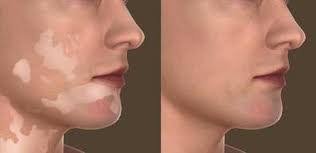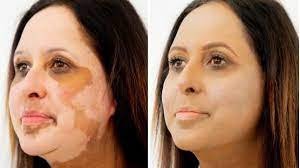Vitiligo Treatment: Effective Solutions Explored in-depth

Introduction:
Vitiligo, a chronic skin disorder characterized by the loss of skin color in patches, affects millions of people worldwide. While it’s not physically painful or life-threatening, its psychological impact can be profound, often leading to feelings of self-consciousness and decreased self-esteem. Individuals with vitiligo face social stigma and psychological distress due to the visible changes in their skin. Fortunately, advancements in medical science have led to various treatment options to manage and sometimes even reverse the effects of vitiligo. In this comprehensive guide, we’ll delve into the intricacies of vitiligo treatment, exploring the available options, their effectiveness, and the latest breakthroughs in dermatology.
Understanding Vitiligo:
Before delving into treatment options, it’s essential to understand the underlying mechanisms of vitiligo. Vitiligo occurs when melanocytes, the cells responsible for producing melanin, are destroyed or stop functioning correctly. Melanin is the pigment that gives skin its color, and its absence results in depigmented patches on the skin’s surface. The exact cause of vitiligo remains unknown. However, it’s thought to stem from a combination of genetic predisposition, autoimmune factors, and environmental triggers.
Genetics play a significant role, as individuals with a family history of vitiligo are more likely to develop the condition. Additionally, autoimmune factors come into play, as the body’s immune system may mistakenly target and attack melanocytes. Environmental triggers such as stress, exposure to certain chemicals, or sunburn may also exacerbate or trigger the onset of vitiligo. Understanding the interplay of genetics, immune function, and environmental factors is crucial. It helps tailor effective treatment strategies to each individual’s needs.
Types of Vitiligo:
Vitiligo can manifest in various forms, each with its unique characteristics. The primary types of vitiligo include:
- Non-segmental vitiligo: This is the most common type, characterized by depigmented patches that typically appear on both sides of the body in symmetrical patterns. These patches may spread and enlarge over time, affecting larger areas of the skin.
- Segmental vitiligo: In contrast to non-segmental vitiligo, segmental vitiligo affects only one side or segment of the body. It tends to develop at a younger age and progresses more rapidly than non-segmental vitiligo.
- Mixed vitiligo: As the name suggests, mixed vitiligo combines features of both non-segmental and segmental vitiligo, with depigmented patches appearing on multiple areas of the body. This type of vitiligo presents a unique challenge in terms of treatment and management.
Treatment Options for Vitiligo:
While no cure for vitiligo exists, numerous treatment options can manage the condition and improve depigmented patches’ appearance. Treatment choice hinges on factors such as vitiligo type, severity, patient preferences, and medical history. Tailored approaches are recommended, addressing each individual’s unique circumstances. Consulting a dermatologist is crucial for determining the most suitable treatment plan.Different approaches may be recommended, tailored to each individual’s unique circumstances. It’s essential to consult with a dermatologist to determine the most suitable treatment plan. Some of the most common treatment modalities include:
Topical Corticosteroids:
Topical corticosteroids are often prescribed as a first-line treatment for vitiligo. These anti-inflammatory medications help suppress the immune response that leads to melanocyte destruction. They are typically applied directly to the affected areas of the skin and may help repigment the depigmented patches over time.
Topical Calcineurin Inhibitors:
Another class of topical medications used to treat vitiligo is calcineurin inhibitors, such as tacrolimus and pimecrolimus. These drugs work by inhibiting the immune response and promoting melanocyte function. They are particularly useful for treating vitiligo in sensitive areas of the body, such as the face and genitals.
Phototherapy for Vitiligo:
Phototherapy involves exposing the skin to ultraviolet (UV) light to stimulate melanocyte activity and promote repigmentation. There are several types of phototherapy used to treat vitiligo, including narrowband UVB (NB-UVB) therapy, psoralen plus ultraviolet A (PUVA) therapy, and excimer laser therapy. Phototherapy sessions are typically conducted in a dermatologist’s office or clinic under controlled conditions.
Depigmentation:
In cases where vitiligo affects a large portion of the body and conventional treatments have been ineffective, depigmentation may be considered as a last resort. Depigmentation involves using topical agents to lighten the remaining pigmented skin, creating a more uniform appearance. This approach is irreversible and may not be suitable for everyone, so it’s essential to weigh the potential risks and benefits carefully.
Surgical Interventions for Vitiligo:
In recent years, surgical techniques have emerged as promising options for treating vitiligo, particularly in cases where other treatments have failed. Surgical interventions for vitiligo include skin grafting, melanocyte transplantation, and micropigmentation (tattooing). These procedures aim to transplant melanocytes or pigment-producing cells to depigmented areas of the skin, restoring color and improving cosmetic appearance.
Emerging Therapies and Research on Vitiligo Treatment:
In addition to established treatment modalities, ongoing research is exploring novel approaches to managing vitiligo. Some of the most promising developments in vitiligo treatment include:
- Janus Kinase (JAK) Inhibitors for Vitiligo: JAK inhibitors are a class of drugs that target the Janus kinase pathway involved in the immune response. Recent studies have shown promising results with oral and topical JAK inhibitors in repigmenting vitiligo lesions. These medications work by modulating the immune response and promoting melanocyte function, offering new hope for individuals with vitiligo.
- Stem Cell Therapy for Vitiligo: Stem cell therapy holds immense potential for treating vitiligo by replenishing the pool of melanocytes in depigmented skin. Researchers are exploring various sources of stem cells, including embryonic stem cells, induced pluripotent stem cells (iPSCs), and mesenchymal stem cells, for their ability to differentiate into melanocytes and repopulate the skin.
- Immunomodulatory Therapies for Vitiligo: Given the autoimmune nature of vitiligo, immunomodulatory therapies that target the underlying immune dysfunction are being investigated. Biologic agents such as anti-TNF-alpha antibodies and interleukin inhibitors are among the promising candidates undergoing clinical trials for the treatment of vitiligo.
- Nutritional and Dietary Interventions for Vitiligo: While not a replacement for conventional treatments, certain nutritional and dietary interventions may complement existing therapies and support skin health in individuals with vitiligo. Studies suggest that antioxidants, vitamins, and minerals, such as vitamin D, vitamin B12, and zinc, may play a role in melanocyte function and repigmentation.
Conclusion:
Vitiligo is a complex dermatological condition with far-reaching implications for affected individuals. While there’s no one-size-fits-all approach to treatment, advancements in medical science offer hope for improved outcomes and better quality of life. A wide array of options, from topical medications and phototherapy to surgical interventions and emerging therapies, are available to address the diverse needs of patients with vitiligo. Staying informed about the latest developments in vitiligo treatment is crucial. Working closely with dermatologists and healthcare providers can help individuals with vitiligo find effective solutions to manage their condition. Embracing their unique skin journey is essential for those affected by vitiligo.
Also read: Erase Your Acne Scars: Top Treatments Revealed in Singapore!


Also read: From Acne to Aging – Find Solutions with Skin Care Products



